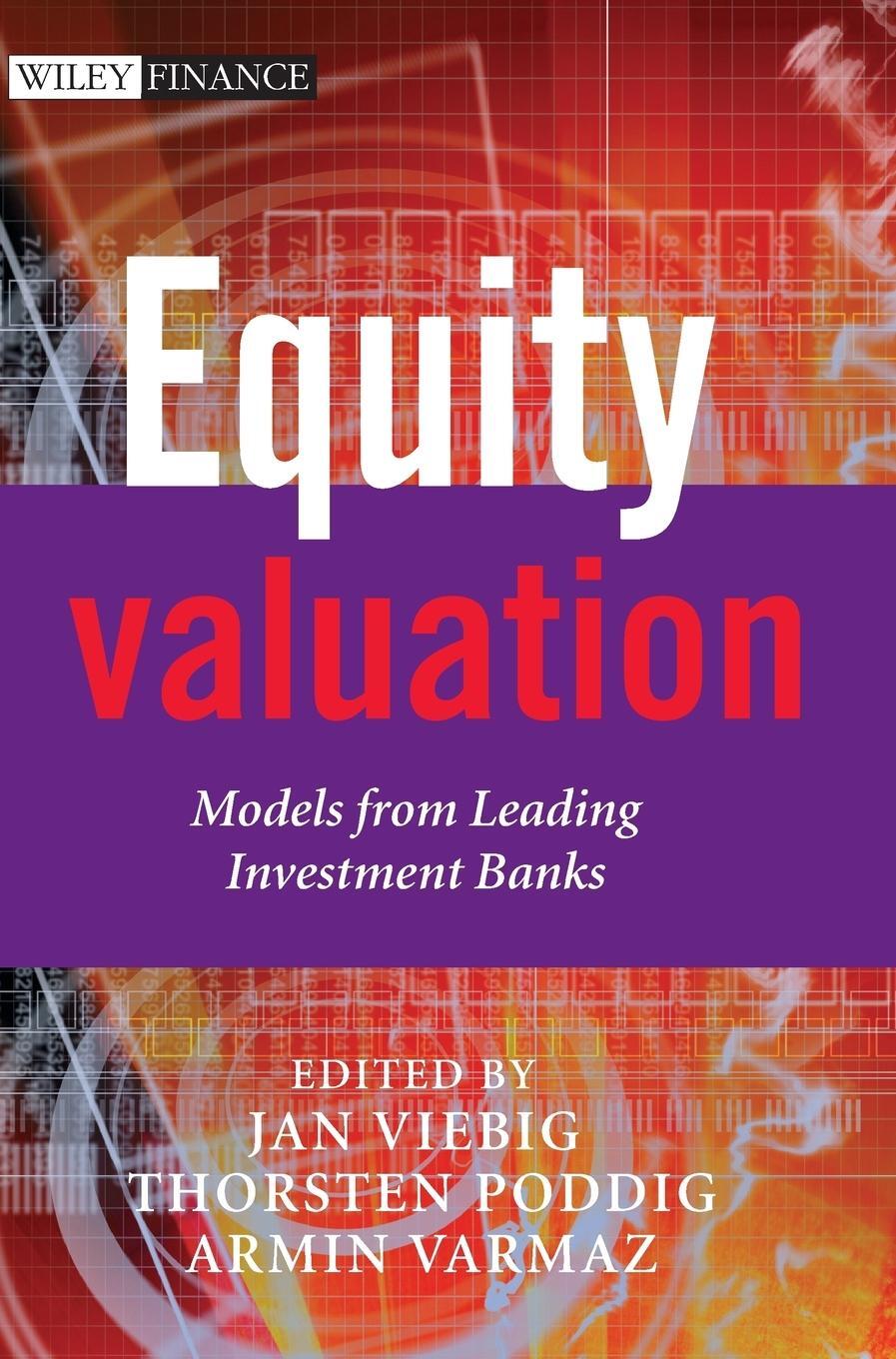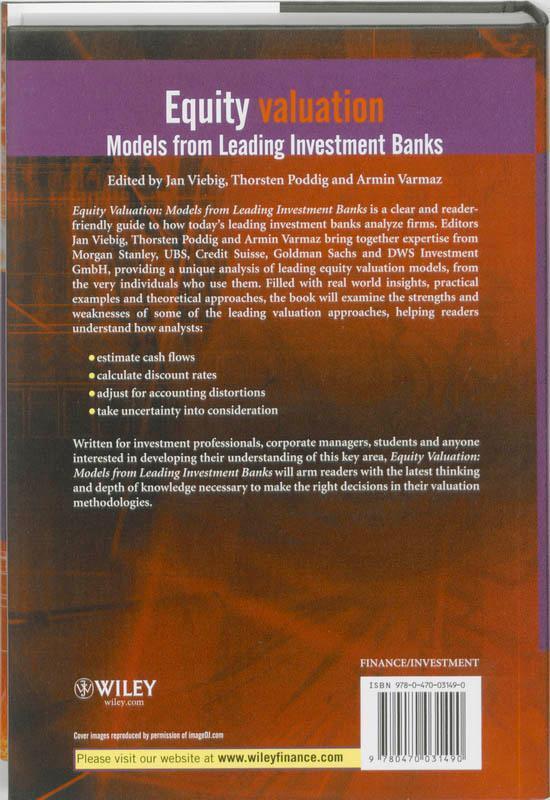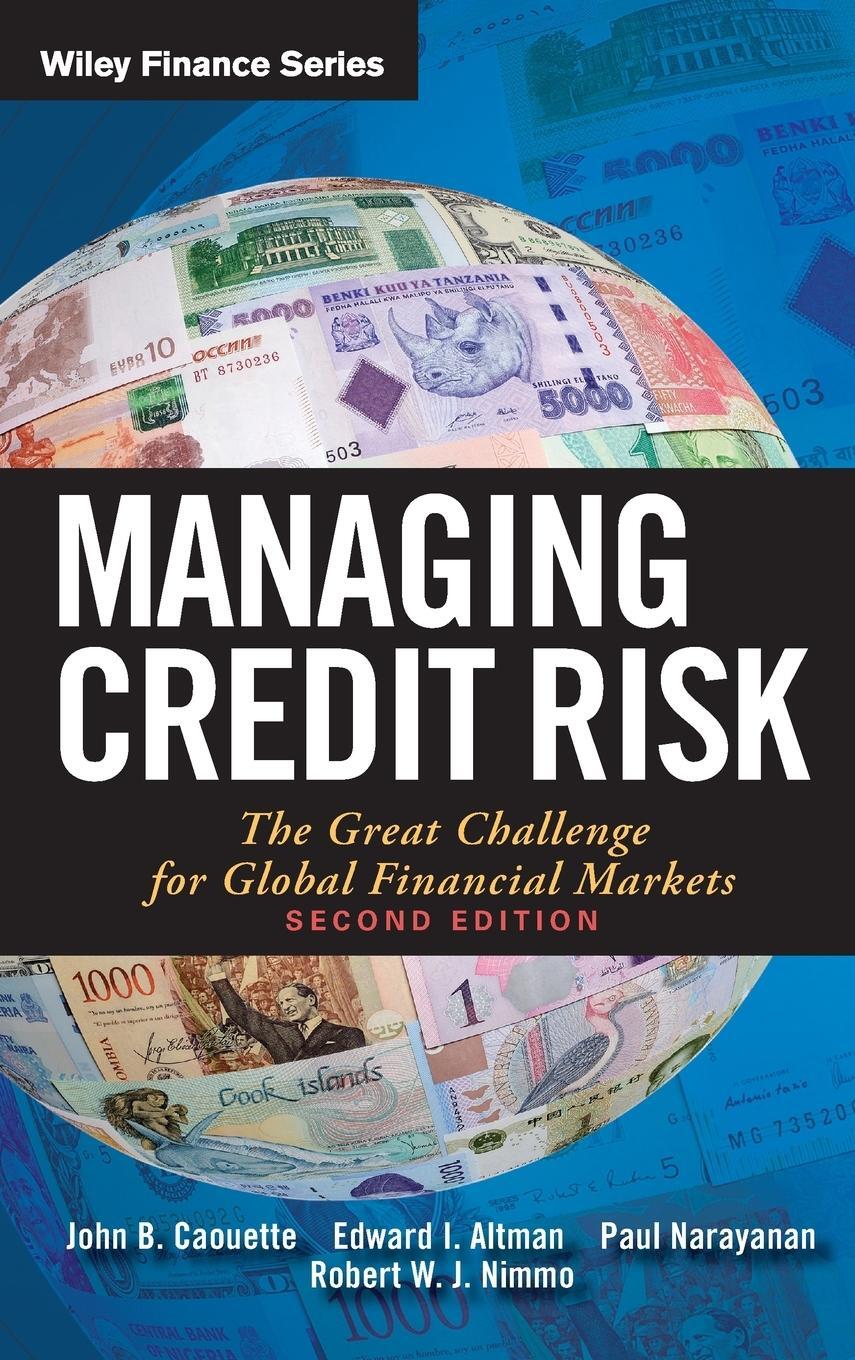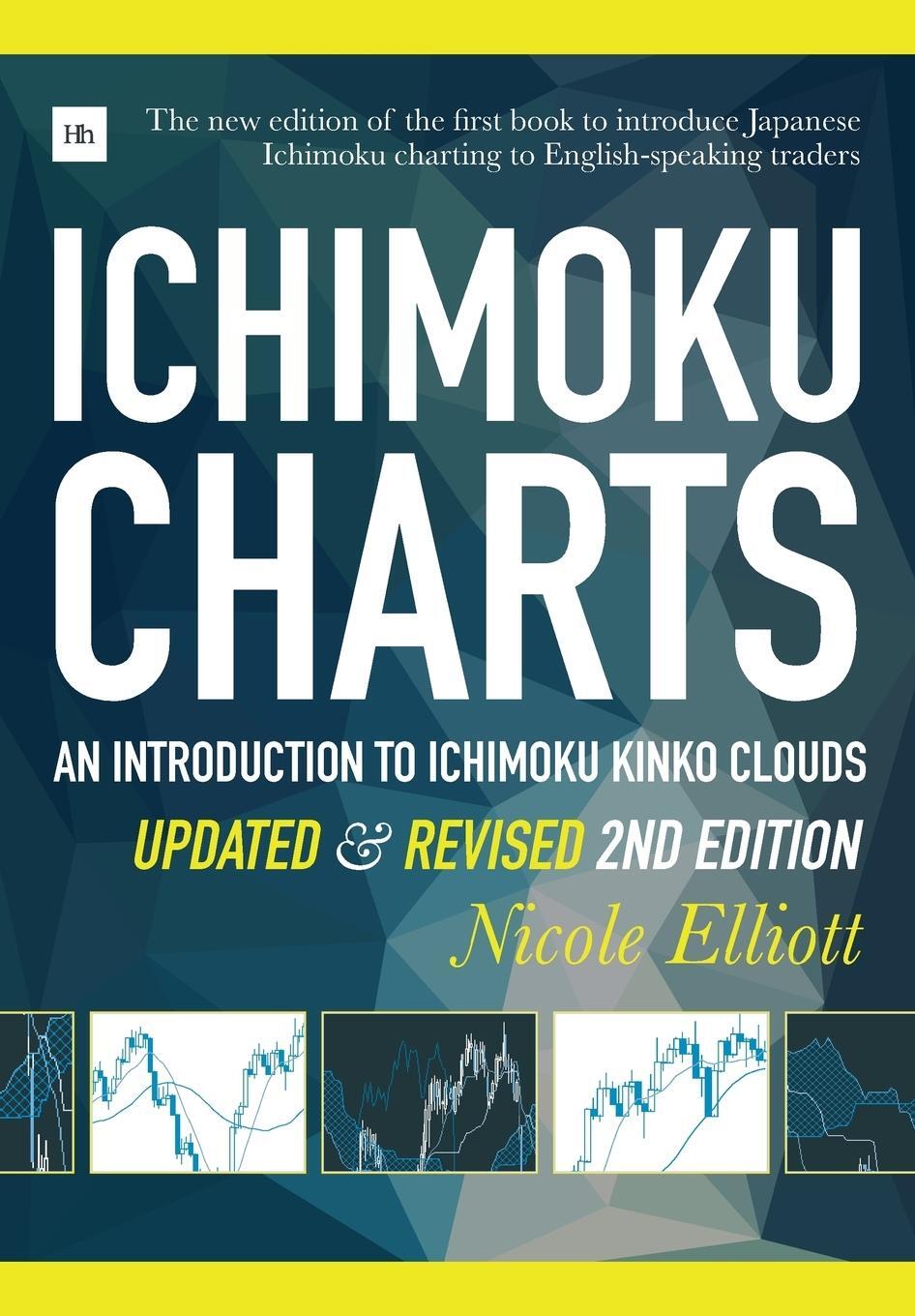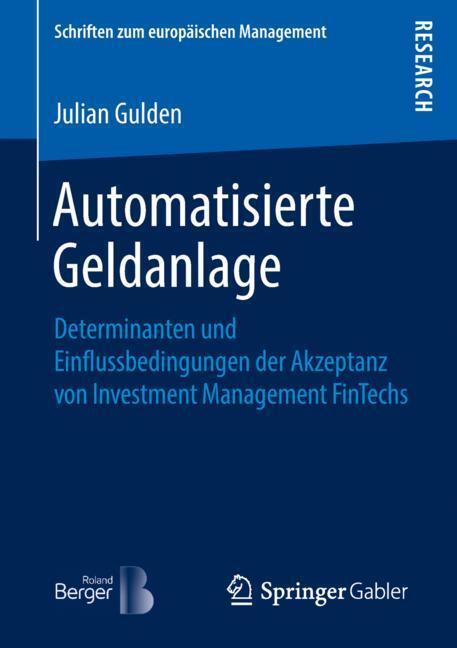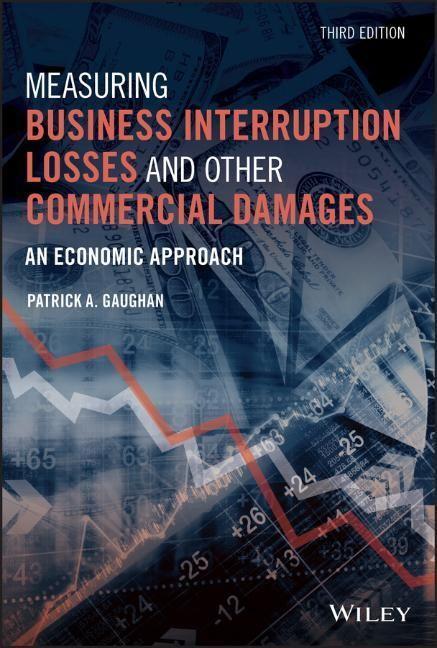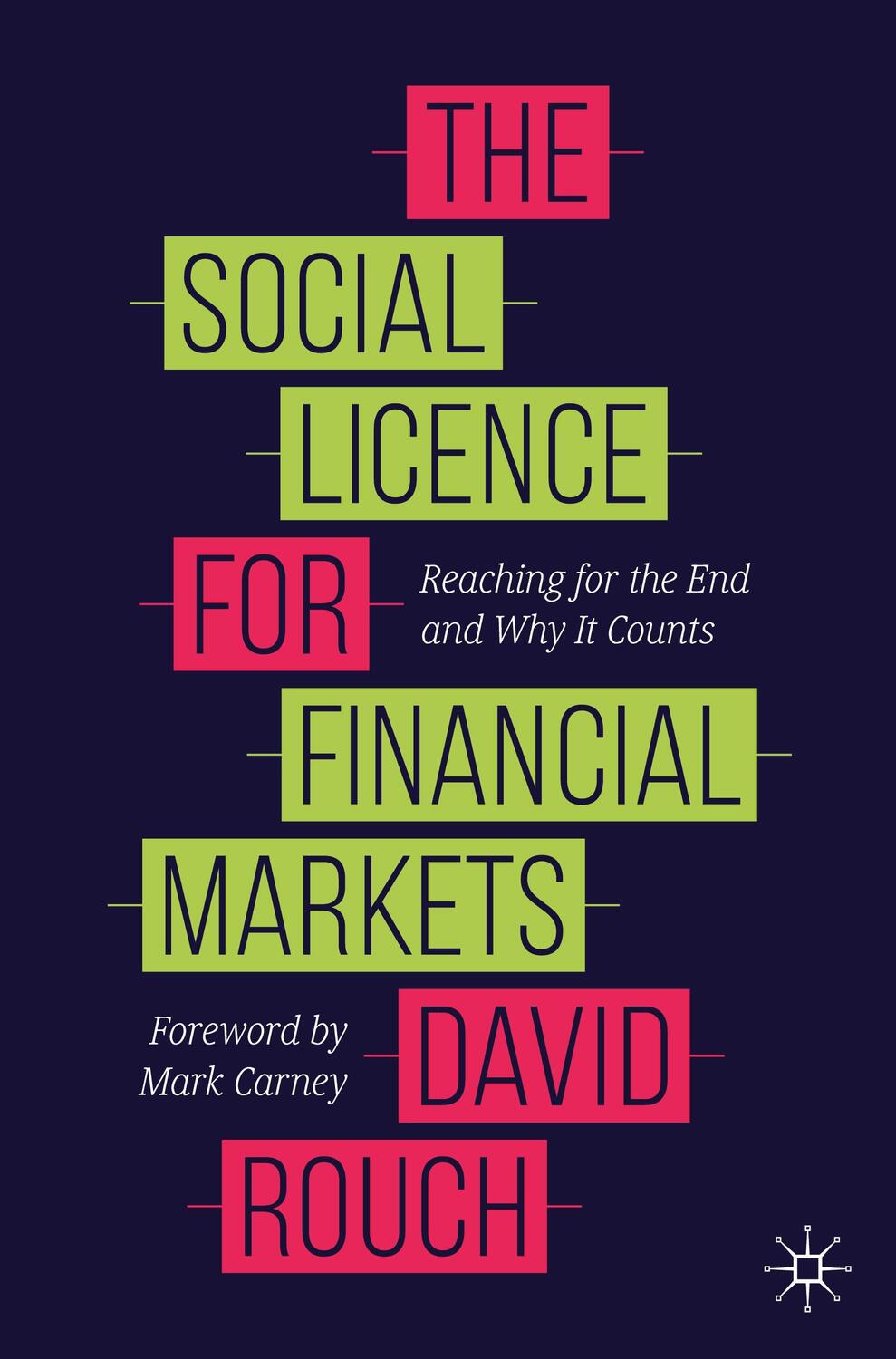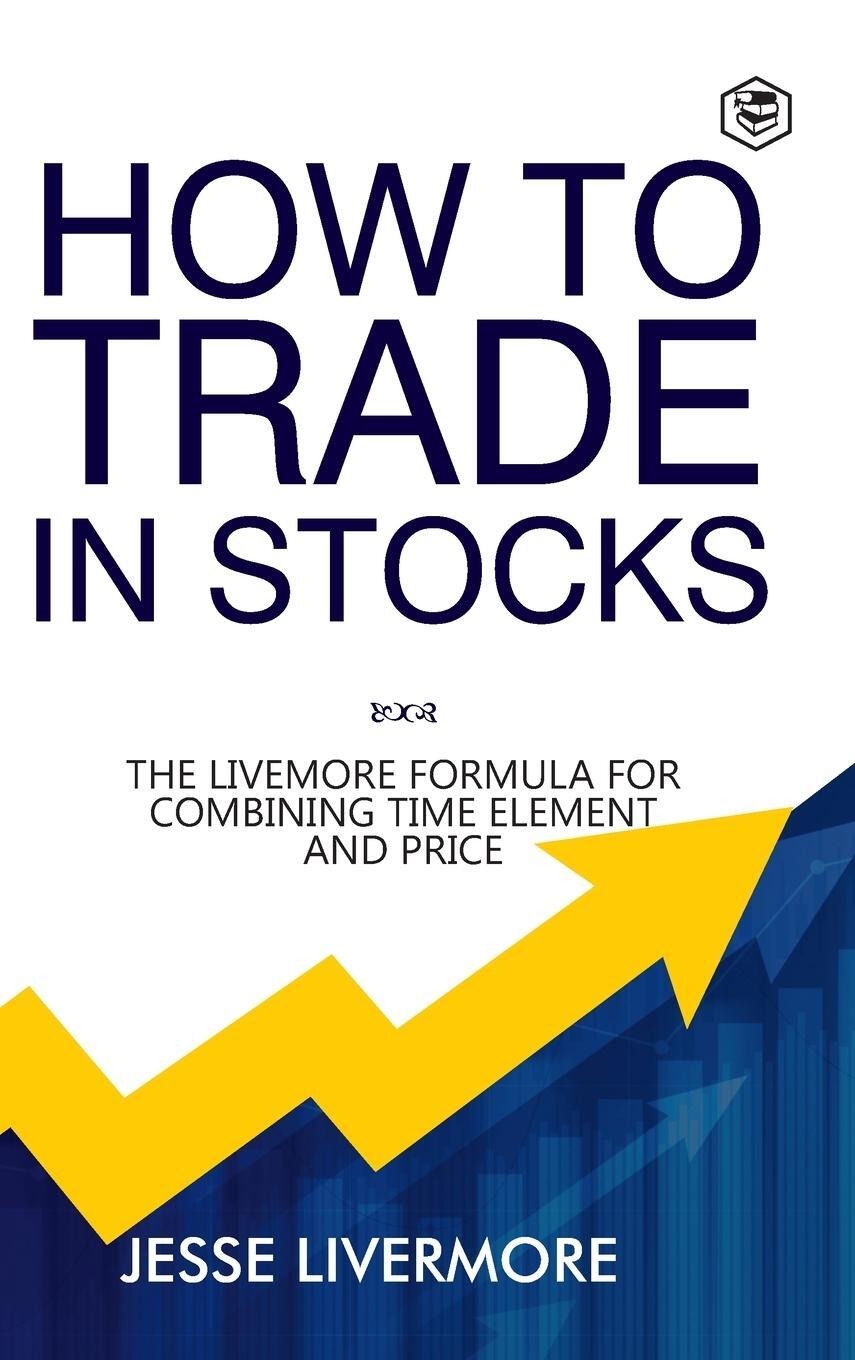Dekorationsartikel gehören nicht zum Leistungsumfang.
Sprache:
Englisch
141,50 €*
Versandkostenfrei per Post / DHL
Aktuell nicht verfügbar
Kategorien:
Beschreibung
Equity Valuation: Models from Leading Investment Banks is a clear and reader-friendly guide to how today's leading investment banks analyze firms. Editors Jan Viebig, Thorsten Poddig and Armin Varmaz bring together expertise from Morgan Stanley, UBS, Credit Suisse, Goldman Sachs and DWS Investment GmbH, providing a unique analysis of leading equity valuation models, from the very individuals who use them. Filled with real world insights, practical examples and theoretical approaches, the book will examine the strengths and weaknesses of some of the leading valuation approaches, helping readers understand how analysts:
* estimate cash flows
* calculate discount rates
* adjust for accounting distortions
* take uncertainty into consideration
Written for investment professionals, corporate managers, students and anyone interested in developing their understanding of this key area, Equity Valuation: Models from Leading Investment Banks will arm readers with the latest thinking and depth of knowledge necessary to make the right decisions in their valuation methodologies.
* estimate cash flows
* calculate discount rates
* adjust for accounting distortions
* take uncertainty into consideration
Written for investment professionals, corporate managers, students and anyone interested in developing their understanding of this key area, Equity Valuation: Models from Leading Investment Banks will arm readers with the latest thinking and depth of knowledge necessary to make the right decisions in their valuation methodologies.
Equity Valuation: Models from Leading Investment Banks is a clear and reader-friendly guide to how today's leading investment banks analyze firms. Editors Jan Viebig, Thorsten Poddig and Armin Varmaz bring together expertise from Morgan Stanley, UBS, Credit Suisse, Goldman Sachs and DWS Investment GmbH, providing a unique analysis of leading equity valuation models, from the very individuals who use them. Filled with real world insights, practical examples and theoretical approaches, the book will examine the strengths and weaknesses of some of the leading valuation approaches, helping readers understand how analysts:
* estimate cash flows
* calculate discount rates
* adjust for accounting distortions
* take uncertainty into consideration
Written for investment professionals, corporate managers, students and anyone interested in developing their understanding of this key area, Equity Valuation: Models from Leading Investment Banks will arm readers with the latest thinking and depth of knowledge necessary to make the right decisions in their valuation methodologies.
* estimate cash flows
* calculate discount rates
* adjust for accounting distortions
* take uncertainty into consideration
Written for investment professionals, corporate managers, students and anyone interested in developing their understanding of this key area, Equity Valuation: Models from Leading Investment Banks will arm readers with the latest thinking and depth of knowledge necessary to make the right decisions in their valuation methodologies.
Über den Autor
Jan Viebig, CFA, is a Managing Director at DWS Investment GmbH in Frankfurt, Germany, where he manages two long / short equity hedge funds. With [...] billion under management, DWS is the largest asset manager in Germany. DWS is part of Deutsche Asset Management (DeAM). Jan holds a Diploma and a PhD degree in Business Administration from the University of the Armed Forces in Munich and a Master of International Management (Post-MBA) degree from Thunderbird, School of Global Management. He is a lecturer at the University of Bremen. His research interests are in the field of hedge funds and equity valuation.
Thorsten Poddig has studied business administration, economics, and computer sciences. He received his PhD degree at the University of Bamberg. His work on concepts in Artificial Intelligence and its application to decision theory and decision making in business administration was followed by analyzing, modeling and forecasting financial markets with neural networks at the University of Freiburg. Since 1996, he has been Professor of Business Administration and Finance at the University of Bremen. His research interests cover all aspects of asset management, including financial market modeling and forecasting, portfolio optimization and asset allocation, equity valuation, capital market theory and empirical finance.
Armin Varmaz studied business administration and economics. In his PhD thesis he analyzed the profitability, the competition and the efficiency in the German banking sector, using panel data approaches and data envelopment analysis. Since 2006 he has been a post-doctoral research fellow at the University of Bremen. His main interests and research experience include valuation theory, optimization in economics and empirical finance. He is currently working on advanced quantitative methods for analyzing, modeling and simulating long-term developments in financial markets.
Thorsten Poddig has studied business administration, economics, and computer sciences. He received his PhD degree at the University of Bamberg. His work on concepts in Artificial Intelligence and its application to decision theory and decision making in business administration was followed by analyzing, modeling and forecasting financial markets with neural networks at the University of Freiburg. Since 1996, he has been Professor of Business Administration and Finance at the University of Bremen. His research interests cover all aspects of asset management, including financial market modeling and forecasting, portfolio optimization and asset allocation, equity valuation, capital market theory and empirical finance.
Armin Varmaz studied business administration and economics. In his PhD thesis he analyzed the profitability, the competition and the efficiency in the German banking sector, using panel data approaches and data envelopment analysis. Since 2006 he has been a post-doctoral research fellow at the University of Bremen. His main interests and research experience include valuation theory, optimization in economics and empirical finance. He is currently working on advanced quantitative methods for analyzing, modeling and simulating long-term developments in financial markets.
Inhaltsverzeichnis
Foreword.
Preface.
Acknowledgments.
Abbreviations.
Part I: Discounted Cash Flow (DCF) Models (Jan Viebig and Thorsten Poddig).
1. Introduction.
2. The Fundamental Value of Stocks and Bonds.
3. Discounted Cash Flow Models: The Main Input Factors.
Part II: Monte Carlo Free Cash Flow to the Firm (MC-FCFF) Models (Deutsche Bank/DWS) (Jan Viebig and Thorsten Poddig).
4. Introduction.
5. Standard FCFF Model.
6. Monte Carlo FCFF Models.
Part III: Beyond Earnings: A User's Guide to Excess Return Models and the HOLT CFROI(r) Framework (Tom Larsen and David Holland).
7. Introduction.
8. From Accounting to Economics - Part I.
9. From Economics to Valuation - Part I.
10. Where Does Accounting Go Wrong?
11. From Accounting to Economics: CFROI.
12. From Accounting to Economics: Economic Profit.
13. From Economics to Valuation - Part II.
Appendix1. Vodafone Financial Statements and Relevant Notes for CFROI Calculation.
Appendix 2: Additional Notes from Vodafone Annual Report for EP Calculation.
Part IV: Morgan Stanley ModelWare's Approach to Intrinsic Value: Focusing on Risk-Reward Trade-Offs (Trevor S. Harris, Juliet Estridge and Doron Nissim).
14. Introduction.
15. Linking Fundamental Analysis to the Inputs of the Valuation Model.
16. Our Valuation Framework.
17. Linking Business Activity to Intrinsic Value Approach: The ModelWare Profitability Tree.
18. ModelWare's Instrinsic Value Approach.
19. Treatment of Key Inputs.
20. The Cost of Capital.
21. Summary and Conclusions.
Appendix.
Part V: UBS VCAM and EGW Regression-based Valuation (David Bianco).
22. Introducing "EGQ" - Where Intrinsic Methods and Empirical Techniques Meet.
23. A Quick Guide to DCF and Economic Profit Analysis.
24. Regression-based Valuation.
25. UBS Economic Growth Quotient.
26. UBS EGQ Regression Valuation.
27. Understanding Regressions.
28. Appendix Discussions.
Part VI: Leverage Buyout (LBO) Models (Jan Viebig, Daniel Stillit and Thorsten Poddig).
29. Introduction.
30. Leveraged Buyouts.
31. IRRs and the Structure of LBO Models.
32. Assumptions of LBO Models.
33. Example: Continental AG.
34. A Word of Caution.
Part VII: Valuation 101: Approaches and Alternatives (Aswath Damodaran).
35. Introduction.
36. Overview of Valuation.
37. Discounted Cash Flow Valuation.
38. Liquidation and Accounting Valuation.
39. Relative Valuation.
40. Real Option valuation.
41. Closing Thoughts on Value Enhancement.
Part VIII: Final Thoughts on Valuation (Armin Varmaz, Thorsten Poddig and Jan Viebig).
42. Introduction.
43. Valuation in Theory: The Valuation of a Single Asset.
44. Outlook: The Multi-asset Valuation and Allocation Case.
45. Summary.
Index.
Preface.
Acknowledgments.
Abbreviations.
Part I: Discounted Cash Flow (DCF) Models (Jan Viebig and Thorsten Poddig).
1. Introduction.
2. The Fundamental Value of Stocks and Bonds.
3. Discounted Cash Flow Models: The Main Input Factors.
Part II: Monte Carlo Free Cash Flow to the Firm (MC-FCFF) Models (Deutsche Bank/DWS) (Jan Viebig and Thorsten Poddig).
4. Introduction.
5. Standard FCFF Model.
6. Monte Carlo FCFF Models.
Part III: Beyond Earnings: A User's Guide to Excess Return Models and the HOLT CFROI(r) Framework (Tom Larsen and David Holland).
7. Introduction.
8. From Accounting to Economics - Part I.
9. From Economics to Valuation - Part I.
10. Where Does Accounting Go Wrong?
11. From Accounting to Economics: CFROI.
12. From Accounting to Economics: Economic Profit.
13. From Economics to Valuation - Part II.
Appendix1. Vodafone Financial Statements and Relevant Notes for CFROI Calculation.
Appendix 2: Additional Notes from Vodafone Annual Report for EP Calculation.
Part IV: Morgan Stanley ModelWare's Approach to Intrinsic Value: Focusing on Risk-Reward Trade-Offs (Trevor S. Harris, Juliet Estridge and Doron Nissim).
14. Introduction.
15. Linking Fundamental Analysis to the Inputs of the Valuation Model.
16. Our Valuation Framework.
17. Linking Business Activity to Intrinsic Value Approach: The ModelWare Profitability Tree.
18. ModelWare's Instrinsic Value Approach.
19. Treatment of Key Inputs.
20. The Cost of Capital.
21. Summary and Conclusions.
Appendix.
Part V: UBS VCAM and EGW Regression-based Valuation (David Bianco).
22. Introducing "EGQ" - Where Intrinsic Methods and Empirical Techniques Meet.
23. A Quick Guide to DCF and Economic Profit Analysis.
24. Regression-based Valuation.
25. UBS Economic Growth Quotient.
26. UBS EGQ Regression Valuation.
27. Understanding Regressions.
28. Appendix Discussions.
Part VI: Leverage Buyout (LBO) Models (Jan Viebig, Daniel Stillit and Thorsten Poddig).
29. Introduction.
30. Leveraged Buyouts.
31. IRRs and the Structure of LBO Models.
32. Assumptions of LBO Models.
33. Example: Continental AG.
34. A Word of Caution.
Part VII: Valuation 101: Approaches and Alternatives (Aswath Damodaran).
35. Introduction.
36. Overview of Valuation.
37. Discounted Cash Flow Valuation.
38. Liquidation and Accounting Valuation.
39. Relative Valuation.
40. Real Option valuation.
41. Closing Thoughts on Value Enhancement.
Part VIII: Final Thoughts on Valuation (Armin Varmaz, Thorsten Poddig and Jan Viebig).
42. Introduction.
43. Valuation in Theory: The Valuation of a Single Asset.
44. Outlook: The Multi-asset Valuation and Allocation Case.
45. Summary.
Index.
Details
| Erscheinungsjahr: | 2008 |
|---|---|
| Fachbereich: | Betriebswirtschaft |
| Genre: | Wirtschaft |
| Rubrik: | Recht & Wirtschaft |
| Medium: | Buch |
| Seiten: | 448 |
| Inhalt: | 256 S. |
| ISBN-13: | 9780470031490 |
| ISBN-10: | 0470031492 |
| Sprache: | Englisch |
| Einband: | Gebunden |
| Autor: |
Viebig
Poddig Varmaz |
| Redaktion: |
Viebig, Jan
Poddig, Thorsten Varmaz, Armin |
| Herausgeber: | Jan Viebig/Armin Varmaz/Thorsten Poddig |
| Hersteller: |
Wiley
John Wiley & Sons |
| Maße: | 250 x 175 x 28 mm |
| Von/Mit: | Jan Viebig (u. a.) |
| Erscheinungsdatum: | 01.05.2008 |
| Gewicht: | 0,936 kg |
Über den Autor
Jan Viebig, CFA, is a Managing Director at DWS Investment GmbH in Frankfurt, Germany, where he manages two long / short equity hedge funds. With [...] billion under management, DWS is the largest asset manager in Germany. DWS is part of Deutsche Asset Management (DeAM). Jan holds a Diploma and a PhD degree in Business Administration from the University of the Armed Forces in Munich and a Master of International Management (Post-MBA) degree from Thunderbird, School of Global Management. He is a lecturer at the University of Bremen. His research interests are in the field of hedge funds and equity valuation.
Thorsten Poddig has studied business administration, economics, and computer sciences. He received his PhD degree at the University of Bamberg. His work on concepts in Artificial Intelligence and its application to decision theory and decision making in business administration was followed by analyzing, modeling and forecasting financial markets with neural networks at the University of Freiburg. Since 1996, he has been Professor of Business Administration and Finance at the University of Bremen. His research interests cover all aspects of asset management, including financial market modeling and forecasting, portfolio optimization and asset allocation, equity valuation, capital market theory and empirical finance.
Armin Varmaz studied business administration and economics. In his PhD thesis he analyzed the profitability, the competition and the efficiency in the German banking sector, using panel data approaches and data envelopment analysis. Since 2006 he has been a post-doctoral research fellow at the University of Bremen. His main interests and research experience include valuation theory, optimization in economics and empirical finance. He is currently working on advanced quantitative methods for analyzing, modeling and simulating long-term developments in financial markets.
Thorsten Poddig has studied business administration, economics, and computer sciences. He received his PhD degree at the University of Bamberg. His work on concepts in Artificial Intelligence and its application to decision theory and decision making in business administration was followed by analyzing, modeling and forecasting financial markets with neural networks at the University of Freiburg. Since 1996, he has been Professor of Business Administration and Finance at the University of Bremen. His research interests cover all aspects of asset management, including financial market modeling and forecasting, portfolio optimization and asset allocation, equity valuation, capital market theory and empirical finance.
Armin Varmaz studied business administration and economics. In his PhD thesis he analyzed the profitability, the competition and the efficiency in the German banking sector, using panel data approaches and data envelopment analysis. Since 2006 he has been a post-doctoral research fellow at the University of Bremen. His main interests and research experience include valuation theory, optimization in economics and empirical finance. He is currently working on advanced quantitative methods for analyzing, modeling and simulating long-term developments in financial markets.
Inhaltsverzeichnis
Foreword.
Preface.
Acknowledgments.
Abbreviations.
Part I: Discounted Cash Flow (DCF) Models (Jan Viebig and Thorsten Poddig).
1. Introduction.
2. The Fundamental Value of Stocks and Bonds.
3. Discounted Cash Flow Models: The Main Input Factors.
Part II: Monte Carlo Free Cash Flow to the Firm (MC-FCFF) Models (Deutsche Bank/DWS) (Jan Viebig and Thorsten Poddig).
4. Introduction.
5. Standard FCFF Model.
6. Monte Carlo FCFF Models.
Part III: Beyond Earnings: A User's Guide to Excess Return Models and the HOLT CFROI(r) Framework (Tom Larsen and David Holland).
7. Introduction.
8. From Accounting to Economics - Part I.
9. From Economics to Valuation - Part I.
10. Where Does Accounting Go Wrong?
11. From Accounting to Economics: CFROI.
12. From Accounting to Economics: Economic Profit.
13. From Economics to Valuation - Part II.
Appendix1. Vodafone Financial Statements and Relevant Notes for CFROI Calculation.
Appendix 2: Additional Notes from Vodafone Annual Report for EP Calculation.
Part IV: Morgan Stanley ModelWare's Approach to Intrinsic Value: Focusing on Risk-Reward Trade-Offs (Trevor S. Harris, Juliet Estridge and Doron Nissim).
14. Introduction.
15. Linking Fundamental Analysis to the Inputs of the Valuation Model.
16. Our Valuation Framework.
17. Linking Business Activity to Intrinsic Value Approach: The ModelWare Profitability Tree.
18. ModelWare's Instrinsic Value Approach.
19. Treatment of Key Inputs.
20. The Cost of Capital.
21. Summary and Conclusions.
Appendix.
Part V: UBS VCAM and EGW Regression-based Valuation (David Bianco).
22. Introducing "EGQ" - Where Intrinsic Methods and Empirical Techniques Meet.
23. A Quick Guide to DCF and Economic Profit Analysis.
24. Regression-based Valuation.
25. UBS Economic Growth Quotient.
26. UBS EGQ Regression Valuation.
27. Understanding Regressions.
28. Appendix Discussions.
Part VI: Leverage Buyout (LBO) Models (Jan Viebig, Daniel Stillit and Thorsten Poddig).
29. Introduction.
30. Leveraged Buyouts.
31. IRRs and the Structure of LBO Models.
32. Assumptions of LBO Models.
33. Example: Continental AG.
34. A Word of Caution.
Part VII: Valuation 101: Approaches and Alternatives (Aswath Damodaran).
35. Introduction.
36. Overview of Valuation.
37. Discounted Cash Flow Valuation.
38. Liquidation and Accounting Valuation.
39. Relative Valuation.
40. Real Option valuation.
41. Closing Thoughts on Value Enhancement.
Part VIII: Final Thoughts on Valuation (Armin Varmaz, Thorsten Poddig and Jan Viebig).
42. Introduction.
43. Valuation in Theory: The Valuation of a Single Asset.
44. Outlook: The Multi-asset Valuation and Allocation Case.
45. Summary.
Index.
Preface.
Acknowledgments.
Abbreviations.
Part I: Discounted Cash Flow (DCF) Models (Jan Viebig and Thorsten Poddig).
1. Introduction.
2. The Fundamental Value of Stocks and Bonds.
3. Discounted Cash Flow Models: The Main Input Factors.
Part II: Monte Carlo Free Cash Flow to the Firm (MC-FCFF) Models (Deutsche Bank/DWS) (Jan Viebig and Thorsten Poddig).
4. Introduction.
5. Standard FCFF Model.
6. Monte Carlo FCFF Models.
Part III: Beyond Earnings: A User's Guide to Excess Return Models and the HOLT CFROI(r) Framework (Tom Larsen and David Holland).
7. Introduction.
8. From Accounting to Economics - Part I.
9. From Economics to Valuation - Part I.
10. Where Does Accounting Go Wrong?
11. From Accounting to Economics: CFROI.
12. From Accounting to Economics: Economic Profit.
13. From Economics to Valuation - Part II.
Appendix1. Vodafone Financial Statements and Relevant Notes for CFROI Calculation.
Appendix 2: Additional Notes from Vodafone Annual Report for EP Calculation.
Part IV: Morgan Stanley ModelWare's Approach to Intrinsic Value: Focusing on Risk-Reward Trade-Offs (Trevor S. Harris, Juliet Estridge and Doron Nissim).
14. Introduction.
15. Linking Fundamental Analysis to the Inputs of the Valuation Model.
16. Our Valuation Framework.
17. Linking Business Activity to Intrinsic Value Approach: The ModelWare Profitability Tree.
18. ModelWare's Instrinsic Value Approach.
19. Treatment of Key Inputs.
20. The Cost of Capital.
21. Summary and Conclusions.
Appendix.
Part V: UBS VCAM and EGW Regression-based Valuation (David Bianco).
22. Introducing "EGQ" - Where Intrinsic Methods and Empirical Techniques Meet.
23. A Quick Guide to DCF and Economic Profit Analysis.
24. Regression-based Valuation.
25. UBS Economic Growth Quotient.
26. UBS EGQ Regression Valuation.
27. Understanding Regressions.
28. Appendix Discussions.
Part VI: Leverage Buyout (LBO) Models (Jan Viebig, Daniel Stillit and Thorsten Poddig).
29. Introduction.
30. Leveraged Buyouts.
31. IRRs and the Structure of LBO Models.
32. Assumptions of LBO Models.
33. Example: Continental AG.
34. A Word of Caution.
Part VII: Valuation 101: Approaches and Alternatives (Aswath Damodaran).
35. Introduction.
36. Overview of Valuation.
37. Discounted Cash Flow Valuation.
38. Liquidation and Accounting Valuation.
39. Relative Valuation.
40. Real Option valuation.
41. Closing Thoughts on Value Enhancement.
Part VIII: Final Thoughts on Valuation (Armin Varmaz, Thorsten Poddig and Jan Viebig).
42. Introduction.
43. Valuation in Theory: The Valuation of a Single Asset.
44. Outlook: The Multi-asset Valuation and Allocation Case.
45. Summary.
Index.
Details
| Erscheinungsjahr: | 2008 |
|---|---|
| Fachbereich: | Betriebswirtschaft |
| Genre: | Wirtschaft |
| Rubrik: | Recht & Wirtschaft |
| Medium: | Buch |
| Seiten: | 448 |
| Inhalt: | 256 S. |
| ISBN-13: | 9780470031490 |
| ISBN-10: | 0470031492 |
| Sprache: | Englisch |
| Einband: | Gebunden |
| Autor: |
Viebig
Poddig Varmaz |
| Redaktion: |
Viebig, Jan
Poddig, Thorsten Varmaz, Armin |
| Herausgeber: | Jan Viebig/Armin Varmaz/Thorsten Poddig |
| Hersteller: |
Wiley
John Wiley & Sons |
| Maße: | 250 x 175 x 28 mm |
| Von/Mit: | Jan Viebig (u. a.) |
| Erscheinungsdatum: | 01.05.2008 |
| Gewicht: | 0,936 kg |
Warnhinweis

